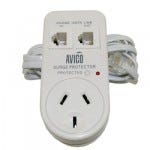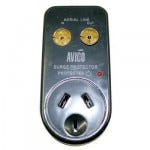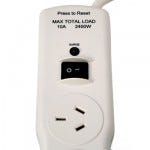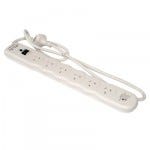



There are many reasons you can think of as to why “surge protection” is a great idea. Designed to protect your valuable electrical devices from sudden voltage spikes, a surge protector/guard tries to limit the voltage supplied to your devices by either blocking the current, or shorting the excess voltage to ground. Your equipment runs the risk of major and potentially unrepairable damage if affected by a power surge. This can leave you with not only the inconvenience of losing important computer information, but the expensive reality of having to replace many of your devices. Even if it appears your devices have not been affected, your equipment’s lifespan may be reduced as a result of an overload of voltage through them.
Designed to maintain a safe threshold of voltage running through your appliances and devices, surge protectors come in various shapes and sizes with single outlets through to multiple outlets on linear boards.
There are many different kinds of surge protectors today in the market. A common type is the MOV or metal oxide varistor. This device includes a metal oxide material which is connected to the grounding line through a semiconductor. The semiconductor serves as a variable resistance. When electricity is below the standard level, it creates a high resistance through the electrons. When there is an increase of voltage, the electrons will create a low resistance.
As an added security, surge protectors are equipped with a fuse. The fuse will serve as a resistor. When a sudden increase of current happens and the surge protector was not able to divert the extra current to the ground line, the fuse will burn. This cuts the circuit and prevents further harm to your appliances. Some protectors also include inputs for your coaxial devices such as antennas, and/or inputs for your telephone line also. Keep in mind however, that a surge protector cannot protect you from natural occurrences such as lightening strike.
View Selby’s range of surge protection devices online






